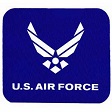Air Force posts RFI for GEOINT imaging & targeting support
 On November 23, the U.S. Air Force posted a request for information for imaging and targeting support for GEOINT research and development (Solicitation Number: FA8620-17-R-3009). The Air Force seeks white papers and tri-charts by 4:00pm EST on January 18.
On November 23, the U.S. Air Force posted a request for information for imaging and targeting support for GEOINT research and development (Solicitation Number: FA8620-17-R-3009). The Air Force seeks white papers and tri-charts by 4:00pm EST on January 18.
AFLCMC/WIN manages the USAF Imaging & Targeting Support (I&TS) portfolio supporting the Geospatial Intelligence (GEOINT) Capabilities Working Group (GCWG). The GCWG manages and plans Air Force airborne GEOINT Capabilities Research, Development Test and Evaluation investments. The I&TS portfolio is a key resource of the GCWG. The I&TS portfolio identifies and provides limited funding to develop and demonstrate promising next-generation Air Force airborne GEOINT capabilities. The key focus of I&TS is on the airborne sensor phenomenology’s which include Electro/Optical, Infrared, Spectral-Multispectral/Hyperspectral Imaging, Ground Surveillance Radar, Full Motion Video, Light Detection and Ranging, and on-board processing/exploitation of sensor data.
In support of the I&TS program, AFLCMC/WIN is conducting market research across industry, academia and government agency programs. The intent is to identify promising candidate programs/technology efforts with projected capabilities that may improve current and future Air Force airborne GEOINT sensors and their role in enhancing the front side of end-to-end-functionality as well as identifying potential transition paths. Market research will help identify what research has been accomplished in the field of GEOINT, as well as technologies that currently exist or could be modified to fill a need. Although FY18 funding is uncertain, I&TS managers are seeking1 – 2 year projects beginning in FY18 that require funding of less than $5 million per year with Technology Readiness Level (TRL) of 4-6 with the objective of taking TRL to 6 or higher. AFLCMC/WIN seeks white papers and tri-charts by 1600 EST, 18 January 2017. All correspondence submitted will be protected and controlled as proprietary. After reviewing the submitted white papers and tri-charts, the Government may request technical exchanges and/or site surveys of respondents’ facilities. This market research will potentially shape Air Force efforts in the FY18-25 timeframe. The Government anticipates the information received will be used to plan and program the required efforts to support airborne GEOINT objectives. I&TS candidates will be presented to the GCWG in the spring of 2017 for consideration.
Submitted white papers should identify potential candidate programs and technology efforts related to the development and demonstration of GEOINT sensors, associated on-board data processing, and algorithms and components supporting end-to-end GEOINT functionality. Components may include: electronics, gimbals, cryogenics, diffraction gratings, focusing lenses, focal plane arrays, read-out integrated circuits, atmospheric and temperature correction algorithms/techniques, airborne processing, interference filters, spectrometer, high resolution imagery subsystems, etc. Components do not need to be part of an existing sensor system; research and development of these components may be ongoing independent of a full system. However, the focus of I&TS is on airborne (or on-board) GEOINT capabilities.
Full information is available here.
Source: FedBizOpps







